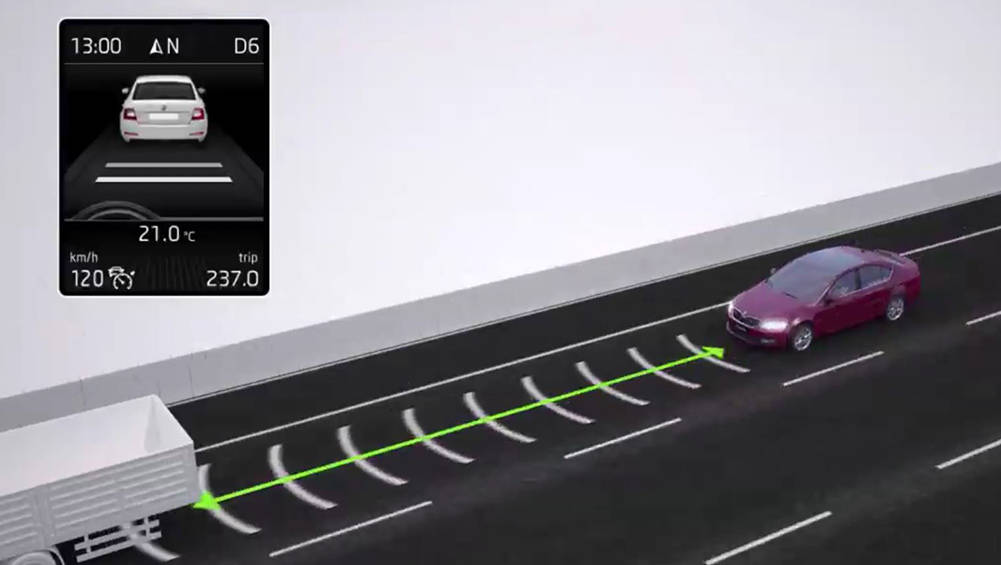When we think about the advancements in automotive technology, one of the standout features that has transformed the driving experience dramatically is adaptive cruise control (ACC). This innovative system takes the traditional cruise control a few steps further, providing remarkable convenience and enhancing safety on the road. But what exactly is adaptive cruise control, and how does it work? Let’s delve into this fascinating technology and explore what drivers can expect when they opt for vehicles equipped with ACC.
Understanding Adaptive Cruise Control
Adaptive cruise control is an automatic speeding and slowing system designed to maintain a vehicle’s speed while adjusting it based on the behavior of traffic ahead. Unlike standard cruise control that requires drivers to set a fixed speed, ACC utilizes sensors and radar technology to monitor the distance between your vehicle and the one in front of you. If the car ahead slows down or comes to a complete stop, the adaptive system automatically slows your vehicle to avoid a collision. Once the road is clear, it will accelerate back to the pre-set speed, making long journeys a more relaxed experience.
How Does Adaptive Cruise Control Work?
The function of ACC relies on multiple sensors, including radar, cameras, and sometimes even LIDAR, to detect vehicles in the same lane. These systems constantly calculate the distance to the vehicle ahead and adjust the speed accordingly. The sophistication of ACC varies across different car manufacturers and models, but they generally operate in similar ways. Most modern systems allow drivers to set a following distance, often displayed in seconds: for instance, two seconds can translate into a safe buffer space under normal conditions.
Types of Adaptive Cruise Control
Adaptive cruise control isn’t a one-size-fits-all feature; it comes in several configurations, each designed for different driving situations:
- Basic ACC: This is the entry-level version, which adjusts your vehicle’s speed to maintain a safe distance from the car in front, but it stops short of integrating steering functions or requiring minimal driver input.
- Stop-and-Go ACC: A step up from basic ACC, this version can bring your car to a full stop and resume driving without the need for driver intervention. This is particularly useful in heavy traffic, allowing drivers to sit back and relax during stop-and-go conditions.
- Active Cruise Control: This takes adaptive cruise control a notch higher by adding steering assist, which means the system can guide the vehicle within its lane, making it a precursor to more advanced features like lane-keeping assist.
- Traffic Jam Assist: This variant blends adaptive cruise control with semi-autonomous driving capabilities. It can handle low-speed traffic conditions automatically, managing acceleration, braking, and steering.
Benefits of Utilizing Adaptive Cruise Control
There are various advantages associated with employing adaptive cruise control in daily driving:
- Enhanced Comfort: Long journeys can become tiresome, but ACC allows for less strain on the driver’s foot, as there’s no need to constantly adjust the accelerator. It can transform highway driving from an exhausting task into a serene experience.
- Increased Safety: By maintaining a safe distance from the vehicle in front, it can significantly reduce the risks associated with rear-end collisions. Notably, modern systems are designed to respond faster than the average human driver in emergency situations.
- Fuel Efficiency: The smooth acceleration and deceleration patterns facilitated by ACC can lead to better fuel economy when compared to human drivers who may accelerate or brake abruptly.
- Reduced Driver Fatigue: Especially enticing for drivers covering long distances, adaptive cruise control lessens the mental load of constant speed adjustments and traffic monitoring.
Potential Drawbacks and Limitations
- Not Fully Autonomous: ACC does not make your vehicle fully autonomous. Drivers are still required to stay alert and may need to take over at any moment, particularly in complex driving environments.
- Weather Dependent: Rain, fog, and snow can hinder the performance of the sensors and cameras, potentially reducing the effectiveness of ACC. It is important to note that drivers should not rely on ACC during adverse weather conditions.
- Cost Considerations: Vehicles equipped with advanced versions of ACC may come at a premium. Potential buyers must weigh the costs against their driving habits and needs.
The Future of Adaptive Cruise Control
As technology continues to advance at an exponential rate, the future of adaptive cruise control looks promising. With developments in artificial intelligence and vehicle-to-everything (V2X) communication, we can expect even smoother and more reliable systems that integrate seamlessly into the driving experience. Manufacturing giants are actively exploring features that will make ACC smarter, allowing it to predict traffic patterns and react preemptively. The dream of fully autonomous vehicles may not be far-fetched, with ACC laying the foundation for a more connected and intelligent transportation landscape.
Conclusion
Adaptive cruise control is a significant leap forward in the realm of driving technology, providing a blend of convenience, safety, and enhanced driving pleasure. Whether navigating through congested city streets or cruising along the open highway, the advantages it offers are undeniable. As drivers, the adoption of such refined technology not only makes our journeys smoother but also signals a pivotal moment in the evolution of transportation. With ongoing advancements on the horizon, the future of driving is indeed exciting, promising to make every road trip a more enjoyable adventure.
